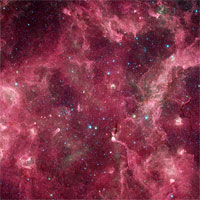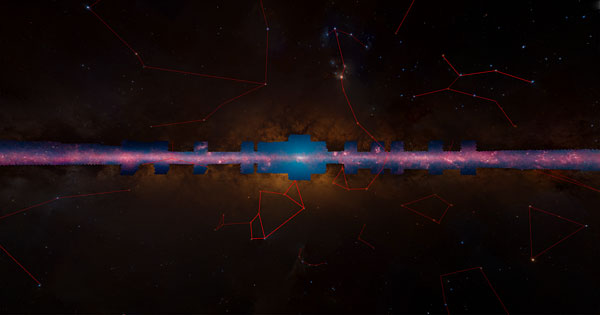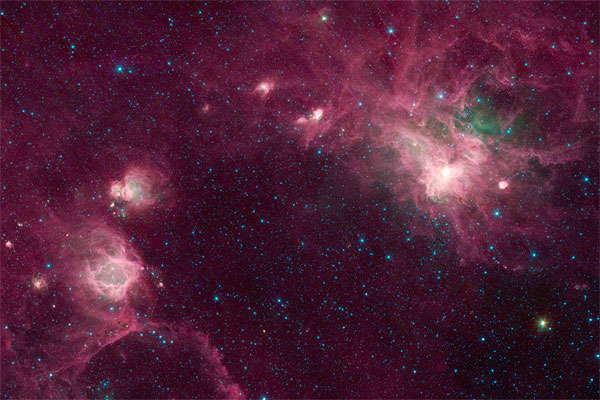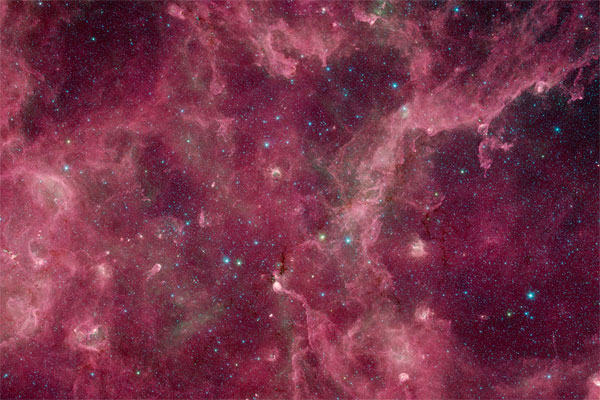Incredible 2.5-million photo panorama maps out our Milky Way galaxy in stunning detail
posted Thursday, March 27, 2014 at 4:26 PM EDT

Ten years in the making. 172 days of cumulative exposures. More than 2.5 million photos in all, and if printed out at 300 dots-per-inch resolution, some 150 feet across. This just-released infrared, 360-degree panorama of our galaxy shot by NASA's Spitzer space telescope might not be the largest photo ever made, nor even the largest spherical panorama -- but it's certainly one of the most technically challenging we've ever seen, and the results are beyond spectacular.
Shot as part of the Galactic Legacy Infrared Mid-Plane Survey Extraordinaire project, or GLIMPSE360 for short, the panorama covers only 3% of our sky -- but it's the most interesting 3%. That's because it covers the region of our galactic disc, the flat plane in which the bulk of our own Milky Way galaxy can be seen.

Over half of all the stars in the Milky Way's disc are visible in the panorama, along with 90% of our galaxy's star-forming regions. And since the whole thing was shot using infrared wavelengths, you can see through the galactic dust to the stars and galaxies behind. (The brightest stars are blue, while dust clouds show up as red.

And while the entire panorama can be zoomed and panned in your web browser thanks to the Microsoft WorldWide Telescope and CDS Aladin Lite viewers on the GLIMPSE360 home page, the whole panorama is available to download. Not just that, you can also get your hands on the source data in full-res TIF format, should you want to try your hands at stitching it. (You'll need a beefy machine to handle the whopping 6.4GB of source imagery, though!)

Watch the video below to get an idea of how the panorama was created, and to see what you'll find within!
(via BGR)